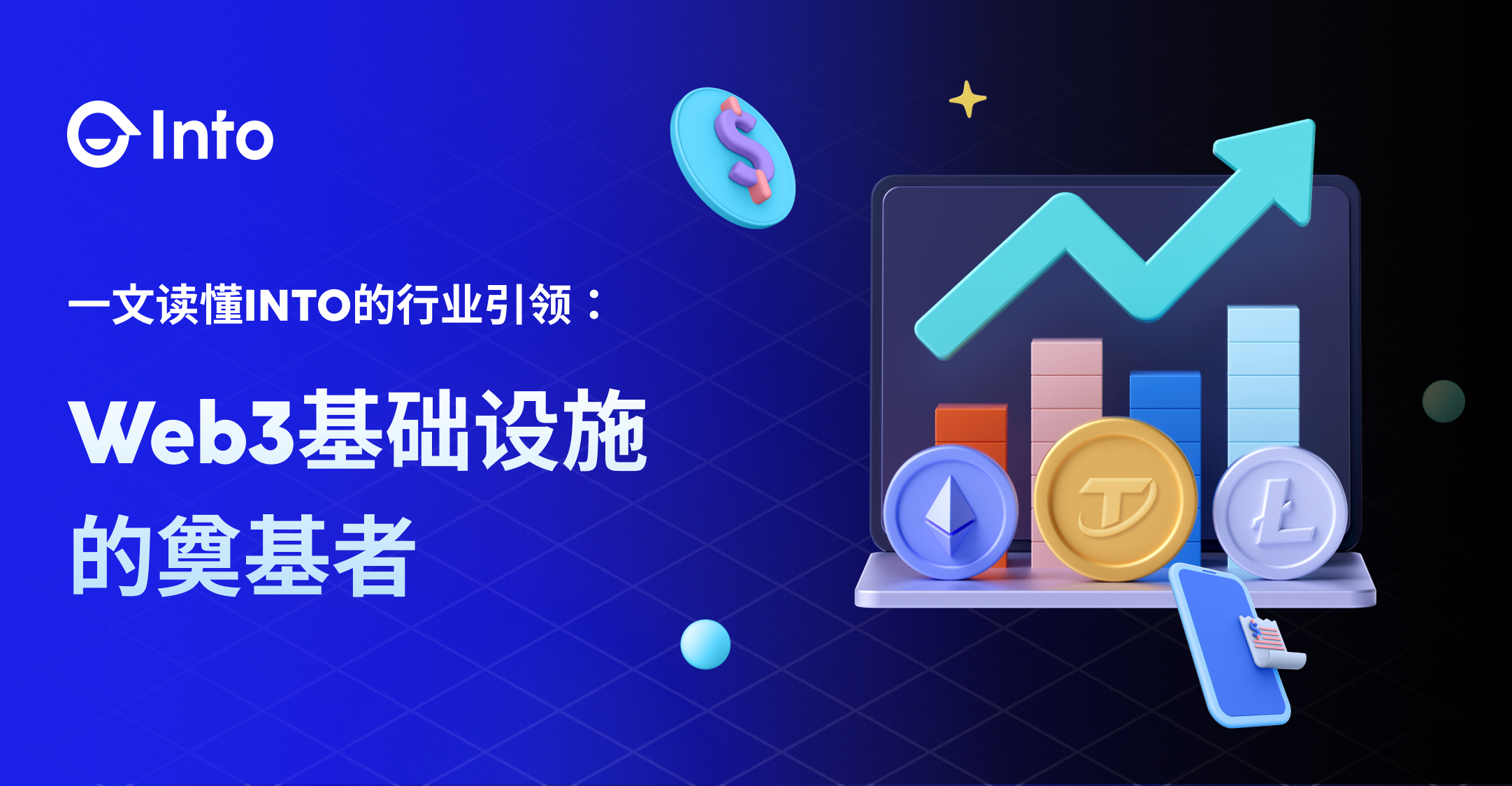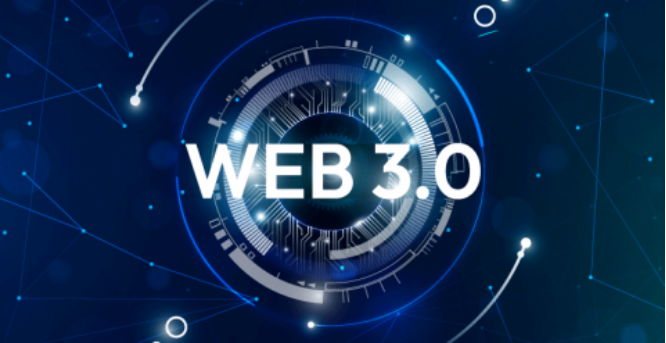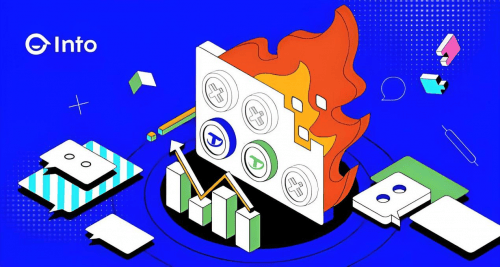In the world of Web3, a silent revolution is taking place. This revolution is not a subversion in the traditional sense, but a reconstruction starting from the underlying logic and technical architecture. In this process, as a leader in the social and financial fields of Web3, INTO is redefining the future of this industry in its own way. It is not just a platform, but also the infrastructure of the Web3 ecosystem.

1. Web3 requires a comprehensive reconstruction of infrastructure
To understand the meaning of INTO, we must first understand the particularity of the Web3 world. Compared with the traditional Internet, Web3 is fundamentally different. This difference is not only reflected in the surface application form, but also in the underlying logical architecture.
First of all, from the perspective of trust mechanism, Web3 is a decentralized world. In this world, there is no centralized authority to provide trust endorsement. Every node is equal, and everyone needs to prove their identity and behavior through cryptography. This requires Web3 to have a brand new credit system that can establish a trusted connection without a centralized intermediary. Otherwise, the Web3 world is like a pile of loose sand, and it is difficult to form an organic whole.
Secondly, from the perspective of value circulation, Web3 is an atomized world. In this world, value is no longer large and indivisible, but is broken down into countless tiny units that flow freely in different applications and scenarios. This requires Web3 to have a set of flexible value carriers and exchange mechanisms that can cross different chains and protocols to achieve seamless transfer and exchange of value. Otherwise, the value circulation of Web3 will be hindered and it will be difficult to unleash its true potential.
Finally, from the perspective of data governance, Web3 is a privacy-first world. In this world, data is no longer a resource monopolized by centralized platforms, but is dominated and controlled by users themselves. Everyone has the right to decide how their data is stored, used, and traded. This requires Web3 to have a secure and reliable data infrastructure that can store, calculate, and circulate data while protecting privacy. Otherwise, Web3 data sovereignty is out of the question, and it is difficult to truly realize user autonomy.
2. INTO's infrastructure layout
INTO's exploration of Web3 infrastructure can be summarized by four key words: "chain network computing governance". These five keywords cover all key links of the underlying architecture of Web3 and outline a panoramic blueprint.
First of all, INTO is building the "chain" of the Web3 credit system. As we all know, blockchain is the core carrier of the Web3 trust mechanism. However, pure blockchain technology cannot meet all the needs of the Web3 credit system. To this end, INTO innovatively proposed the concept of "decentralized credit scoring". By integrating multi-dimensional data on and off the chain, INTO generates a comprehensive and objective credit portrait for each user. This credit portrait not only reflects the user's behavior within the INTO platform, but also brings together the user's credit record in the entire Web3 ecosystem. In this way, INTO has built a universal and portable Web3 native credit system, providing a set of trusted "credit chain" infrastructure for the entire industry.

Secondly, INTO is building a "network" for cross-chain value transfer. In the world of Web3, value is discretely distributed and exists in different chains and applications. To achieve the free flow of value, it is necessary to break through the barriers between different chains. INTO is well aware of this and is committed to building an open and interconnected cross-chain network. Through the cross-chain bridging protocol and atomic exchange mechanism, INTO has achieved seamless transfer and exchange of assets on different chains. At the same time, INTO has also innovatively designed a cross-chain identity mapping mechanism that allows users to maintain consistent identity representation on different chains. This "super connection" of value and identity has greatly promoted the interoperability and integration of the Web3 ecosystem, allowing the flow of value to be like a surging river, stirring up vitality.
Next, INTO is still exploring the "calculation" of privacy computing. In the context of Web3, data computing is no longer a simple centralized processing, but needs to be carried out under the premise of protecting privacy. To this end, INTO has introduced advanced privacy computing technologies such as homomorphic encryption, multi-party secure computing, and zero-knowledge proof. Through these technologies, data can be processed in an encrypted state and computing tasks can be completed without leaking the original information. This "privacy first" computing paradigm has brought new vitality to social, financial and other application scenarios on INTO. Users can interact and trade on INTO without worrying about privacy being violated. This extreme protection of privacy will become the golden signboard of INTO and even the entire Web3 world.
Finally, INTO is also practicing community self-governance. DAO is a model of community governance in the Web3 world. INTO has fully absorbed the essence of DAO and cleverly integrated it with its own business scenarios. Through TOX tokens and on-chain governance contracts, INTO has given every community member the right to participate in platform governance. Users can influence major decisions of the platform through proposals and voting. This "code is law" governance mechanism ensures that the development of INTO is always consistent with the interests of the community, and truly realizes the concept of "platform co-construction and benefit sharing".
3. The path of “openness” + “stratification” + “gradualness”
How can INTO stand out in the reconstruction of Web3 infrastructure and become the industry leader? The reasons can be summarized as "openness", "layering" and "progressiveness". These three magic weapons constitute INTO's unique methodology for leading the industry.

First of all, INTO adheres to the concept of "openness". INTO is well aware that the construction of Web3 infrastructure cannot be completed by one company alone, but requires the collaborative participation of the entire industry. Therefore, INTO has established an open and inclusive attitude from the beginning. Whether in terms of technical architecture or ecological construction, INTO has widely absorbed the forces of all parties and formed a close linkage with industry partners. Through open APIs, SDKs and other methods, INTO provides third-party developers with a convenient access channel, allowing more innovative applications to be quickly built and iterated based on INTO's infrastructure. At the same time, INTO also actively promotes the formulation of industry standards, participates in the contribution of the open source community, and strives to achieve technology and resource sharing on a larger scale. It is thanks to this concept of open collaboration that INTO can form a powerful force of "unity" in the construction of Web3 infrastructure.
Secondly, INTO follows a "layered" architecture. Web3 is a highly complex system involving multiple levels of technology and mechanisms. If you try to reconstruct all levels in one package, it will not only be extremely difficult, but also extremely risky. INTO has a clear understanding of this. Therefore, in the design of the infrastructure, INTO has adopted a "layered decoupling" strategy. The entire architecture is divided into multiple layers such as consensus layer, network layer, storage layer, computing layer, and application layer. Each layer has its own independent functions and interfaces, which can achieve a gradual upgrade from the bottom to the top. This layered architecture not only greatly reduces the coupling of the system and improves flexibility, but also provides space for innovation at different levels. In INTO's design, the underlying technological breakthroughs can be seamlessly transmitted upward, and the upper-level application innovations can also flexibly call and combine the underlying resources according to demand. It is precisely thanks to this layered decoupling architecture that INTO can be at ease in the construction of Web3 infrastructure and achieve steady progress.
Finally, INTO adheres to the "gradual" route. The reconstruction of Web3's infrastructure is by no means a one-time project, but a gradual and continuous evolution process. INTO has a deep understanding of this. Therefore, the idea of gradualism runs through INTO's construction roadmap. INTO does not pursue a "perfect solution" that can be achieved in one step, but is based on the present and looks to the future, moving forward through iterative optimization. At each stage, INTO will determine the most urgent and valuable construction priorities based on the current status of industry development and community feedback. At the same time, INTO also attaches great importance to the "backward compatibility" of infrastructure to ensure that each upgrade can be smoothly transitioned and will not affect existing applications and users.
From trust to value, from storage to computing, and then to governance, INTO is redefining the connotation and extension of infrastructure for the Web3 world. This redefinition is not only an iteration at the technical level, but also an innovation at the conceptual level; it is not only a local optimization, but also a systematic reconstruction. It indicates that Web3 is moving from scattered breakthroughs to global penetration, and from application exploration to underlying consolidation.


